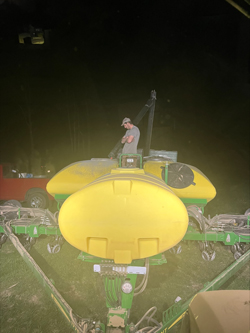
Looking forward to this year’s growing season, farmers often wonder what kind of weather challenges they will face. Although we cannot predict the weather (but we often wish we could), we can at least prepare for it. With access to more technology and data than ever before, getting a good prediction of what the year’s growing season is going to look like makes it a little less stressful on the farmer. In a recent webinar from the Iowa State University Extension, Dennis Todey, director of the USDA Climate Hub, dove into what he anticipates for this year’s growing season.
Across the country in 2023, temperatures soared above average, with many records being set throughout the Midwest. Precipitation numbers were reported much above average on the East Coast, and remained average throughout the rest of the country, according to the National Center for Environmental Information (NCEI).

With the growing season quickly approaching, Todey noted that from the months of January to May, we are on track for a strong El Niño. Even though this is not a historically strong El Niño, above average temperatures can still be expected. It is projected the El Niño that many of us are experiencing is unlikely to affect the summer months, though as we move past the month of May, the outlook shows the El Niño becoming neutral. Neutral is defined as the point in-between La Niña and El Niño. During this period, it is hard to project what exactly temperature and precipitation data will look like. It is suspected that La Niña will ramp up at the end of the summer throughout the fall.
This is not anticipated to be a drought year for most of the country, although for a state like Iowa, that is a different story. With the past few years being drought ridden, it is expected that this year’s dry conditions will continue. Iowa is the epicenter of drought in the country, with a current 20-inch precipitation deficit. Although there has been rain, it has not been enough to offset the amount needed to make up for the deficit.
With drier soils anticipated for the upcoming season, Todey foresees no major spring planting slowdowns due to wet fields. As farmers begin to get crops in the ground, Todey recommended considering how soil moisture will be a limiting factor on your yield goals. Farmers have been selecting many crop varieties that have the technology to withstand drought. Although we are seeing some improvements in drought tolerance, increases in yield have not been reported. Fertilizing to capitalize on high yields this year may not be of value if water is not available, Todey noted.







